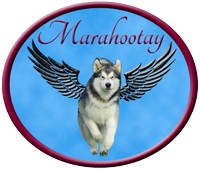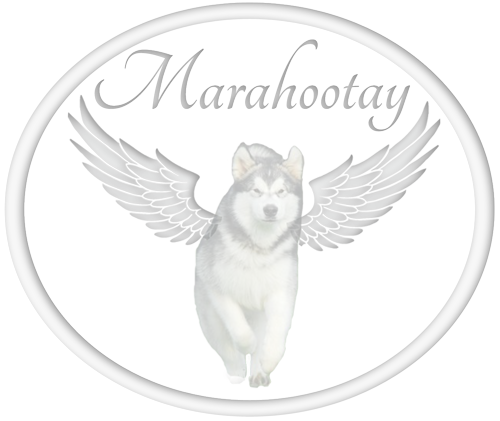Malamutes are pretty much a product of evolution, so they’ve been around for a long, long time. Early explorers wrote that the dogs of the malamute Indians of Alaska were bigger, stronger, more beautiful and gentler with their human companions than any other arctic dogs they had seen. But the breed was virtually unknown for many years.
Until the American Kennel Club recognised malamutes as a distinct breed in 1935, they were lumped with a lot of others as “Eskimo dogs”. Even then, not much happened before and during World War II. But in the late 40’s and early 50’s a lot of people became interested, all about the same time. That is when the modern Malamute really began.
The Alaskan Malamute is a powerful and substantially built dog with a deep chest and strong, compact body, not too short coupled, with a thick coarse guard coat of sufficient length to protect a dense, woolly undercoat, from 1 to 2 inches in depth when the dog is in full coat. Stands well over pads, and this stance gives the appearance of much activity, showing interest and curiosity. The head is broad, ears wedge-shaped and erect when alert. The muzzle is bulky with only slight diminishing in width and depth from root to nose, not pointed or long, but not stubby. The Malamute moves with a proud carriage, head erect and eyes alert. Face markings are a distinguishing featre. These consist of either cap over head and rest of face solid colour, or face marked with the appearance of a mask. Combinations of cap and mask are not unusual. The tail is plumed and carried over the back, not like a fox brush, or tightly curled, more like a plume waving.
Malamutes are of various colours, grey, black, red, chocolate, sable or a mixture but the under body will always be white, the only solid colour accepted on a Malamute in fact is white, but you won’t see many of them about. Their feet are of the “snowshoe” type, tight and deep, with weel-cushioned pads, giving a firm and compact appearance. Front legs are straight with big bone. Hind legs are broad and powerful, moderately bent at stifles, and without cowhocks. The back is straight, gently sloping from shoulders to hips. The loin should not be so short or tight as to interfere with easy, tireless movement. Endurance and intelligence are shown in body and expression. The eyes are almond shaped, the expression soft and indicates an affectionate disposition.
Malamute bitches should stand 23 inches at the shoulders and wigh about 75 pounds, whereas dogs should stand 25 inches at the shoulders and weigh 85 pounds.
The Alaskan Malamute is an affectionate, friendly dog, not a “one man” dog. He is loyal, devoted companion, playful on invitation, but generally impressive by his dignity after maturity. Alaskan Malamutes are pack animals and consider their owners as pack-leaders or at least they should, but to get the best from your dogs you must show lots of love and affection as they will most definitely demand you cuddle and fuss them.
They do not respond well to physical abuse and will sooner or later respond, so always remember although the dogs should know who is in charge you must control the dog with your voice and not your hand.
The Alaskan Malamute will shed its coat at least once a year and when it does be prepared because you will think you have someone else’s dog, the Malamute looks a shadow of its self when out of coat.
You will need to groom your dog regularly as they have a longer coat than the norm and are more likely to bring into your house all the things you didn’t want (copious amounts of mud included!) Daily exercise and a secure garden with 6 foot fencing are also required to keep your pride and joy safe and not bored.



